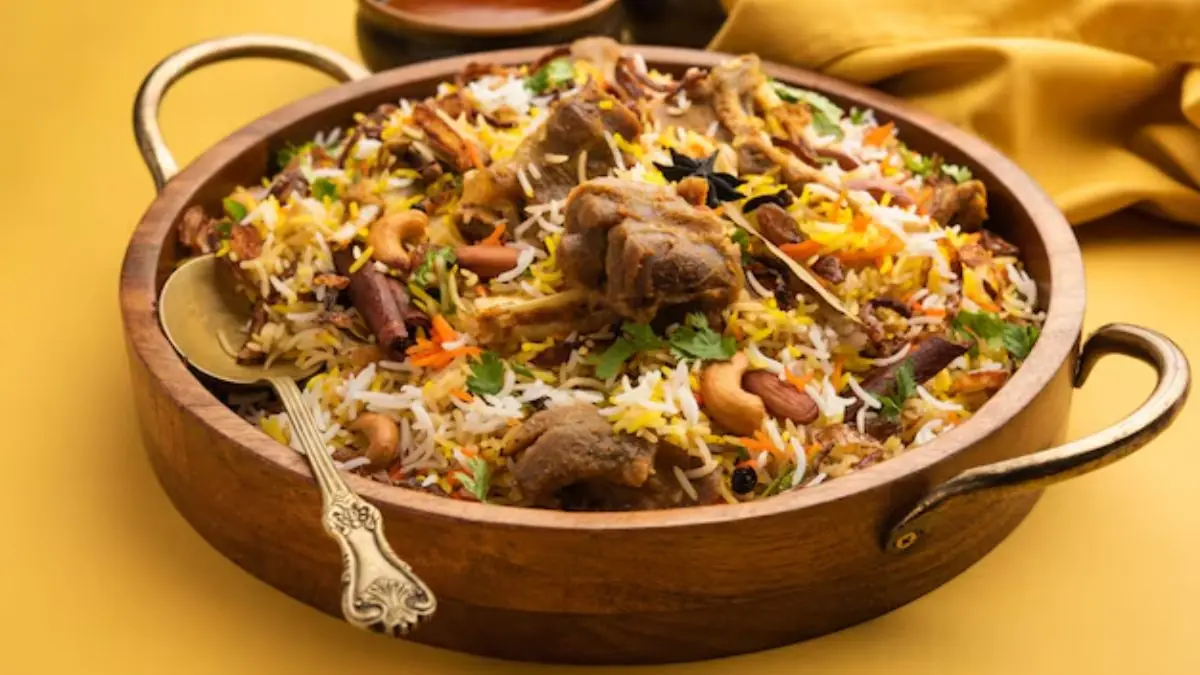Lucknow, the ‘City of Nawabs’, is a cultural hub and capital of Uttar Pradesh. It is where you will find skilled women weaving beautiful chikankari embroidery, culinary masters keeping the Awadhi cuisine alive, old monuments welcoming tourists and natives with their rustic charm, and small lanes narrating a thousand stories in a single frame.
Amid the popularity of galouti kebabs, shahi tukda, tunday kababi, chaat, and makkhan malai, the authentic mutton biryani has its roots in the royal kitchens of Nawabs of Awadh. It is a culinary gem packed with flavours. It is a dish that you learn by practising patience. Ask any maestro in the industry, and they will confess that Lucknowi mutton biryani is not a dish that you master in one session. It’s a delicacy that you perfect after jotting down learnings from many failed or okay-ish attempts.
This biryani recipe is a result of two culinary traditions – Mughal and Persian – coming together to birth a drool-worthy rice-based
Lucknow, the ‘City of Nawabs’, is a cultural hub and capital of Uttar Pradesh. It is where you will find skilled women weaving beautiful chikankari embroidery, culinary masters keeping the Awadhi cuisine alive, old monuments welcoming tourists and natives with their rustic charm, and small lanes narrating a thousand stories in a single frame.
Amid the popularity of galouti kebabs, shahi tukda, tunday kababi, chaat, and makkhan malai, the authentic mutton biryani has its roots in the royal kitchens of Nawabs of Awadh. It is a culinary gem packed with flavours. It is a dish that you learn by practising patience. Ask any maestro in the industry, and they will confess that Lucknowi mutton biryani is not a dish that you master in one session. It’s a delicacy that you perfect after jotting down learnings from many failed or okay-ish attempts.
This biryani recipe is a result of two culinary traditions – Mughal and Persian – coming together to birth a drool-worthy rice-based delicacy. Dum pukht, or slow cooking technique, is essential to add a depth of flavour and combine the notes of different layers into a single bite. This dish is not only a symbol of royalty, but it needs to be preserved and passed on from this generation to the next so that people remember the ever-flourishing culinary period during the Nawabi era between the 18th and 19th centuries.
It embodies the philosophies of Awadhi cuisine, where spices are used in a balance to create a symphony of subtle notes that leave a person reaching for seconds while dining. Unlike other versions of recipes across India, the Lucknowi one is mild, fragrant, and strikes a balance among spicy, salty, and subtly sweet notes.
Whole spices like bay leaf, cardamom, cloves, and cinnamon add warmth, while kewra water and rose extracts add an invigorating aroma and subtle sweetness. A fun fact to keep in mind is that Lucknowi mutton biryani uses yellow chilli instead of red chilli powder. The art of making this biryani is to understand how to make the dish fulfilling with mild spices, without overpowering notes.


